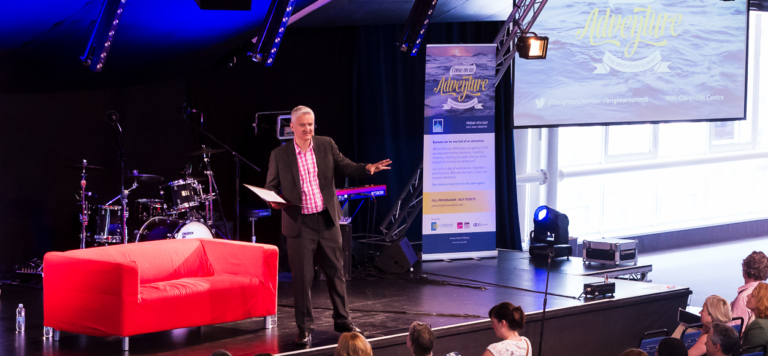5th September 2017
Don’t use PowerPoint in your presentation, use Jelly Babies!
Lets bust a myth. You don’t need slides in order to give a presentation. You don’t need PowerPoint in order to create a memorable speech. You don’t need bulletpoints to illustrate a training session.
Presentations, speeches or training sessions (and they really are all variants of the same thing) need to be engaging, memorable and easy to understand in order to be effective. Audiences or delegates have ridiculously short attention spans these days and grabbing and holding their attention for more than a few minutes is increasingly challenging. An audience giving you their time and attention is a privilege that has to be earned; why should they honour you with their attention when they could be checking their emails or hitting social media?
It’s imperative that you bring your presentations to life and make them engaging, but for most delegates, slides are the very antithesis of engaging. Here are a few other ideas.
- Show, don’t tell. If you’re explaining to your delegates what something looks like or how it works, wouldn’t it be easier to show them instead? Think about bringing a sample of a product or an example of a gadget or machine. If it’s not portable enough to bring into a training room, go to it in advance and shoot a video of it in action or people reacting to it that you can show. Moving images tell a story far more quickly and with far more impact than still images or a lengthy description.
- Use Jelly Babies. Well, props, generally. Instead of putting up yet another chart or graph on a slide, why not create it in front of your audience or delegates using something physical. Lego is brilliant for building bar charts (and loads of other things) in front of a room (as long as the room isn’t too big that they won’t be able to see). If you’re talking about groups of people such as staff or customers, use different colour Jelly Babies to represent them, each baby representing 10, 100 or even 1000 people if you’re talking about large numbers. You can form groupings and move people between groups in a way that a static chart won’t communicate.
- Go low tech. There’s a reason why every meeting room has a flip chart in it. They’re incredibly useful. Don’t just use them for scribing delegate’s answers to questions, however. If you’re using slides, especially if you’re presenting lots of data, every now and again blank the screen (hot tip on this coming up) and shift focus to the flipchart or whiteboard and draw the next graph. People will watch you delineate each axis so will understand what they show, then they will follow as you draw in the latest figures, trend or pattern. Because this process takes a few seconds they’ll process that data far more than having it presented instantly on a slide, so are more likely to understand and remember it. It also demonstrates – live – that you really know your stuff. (Top tip – to blank the screen when in presentation mode in PowerPoint or Keynote, hit B to go to a black screen or W to go to a white screen. Hit any key to return to your slides.)
- The power of the question. Questions are probably the simplest and most effective way to keep your delegates engaged. Incentivise them by offering a small prize (a funsize bar of chocolate for instance) for a correct answer, or turn them into a quiz, a game show (Blankety Blank works well) or even an online vote. If you don’t want to take questions during your session, encourage delegates to Tweet them using a particular hashtag, then go through them all at the end.
The aim is to turn your presentation into a two-way process, a conversation between you and your delegates. If you’re doing all the talking, or you’re only sharing the load between your mouth and your slides, you’re not engaging with your audience, and your presentation will never be effective.

